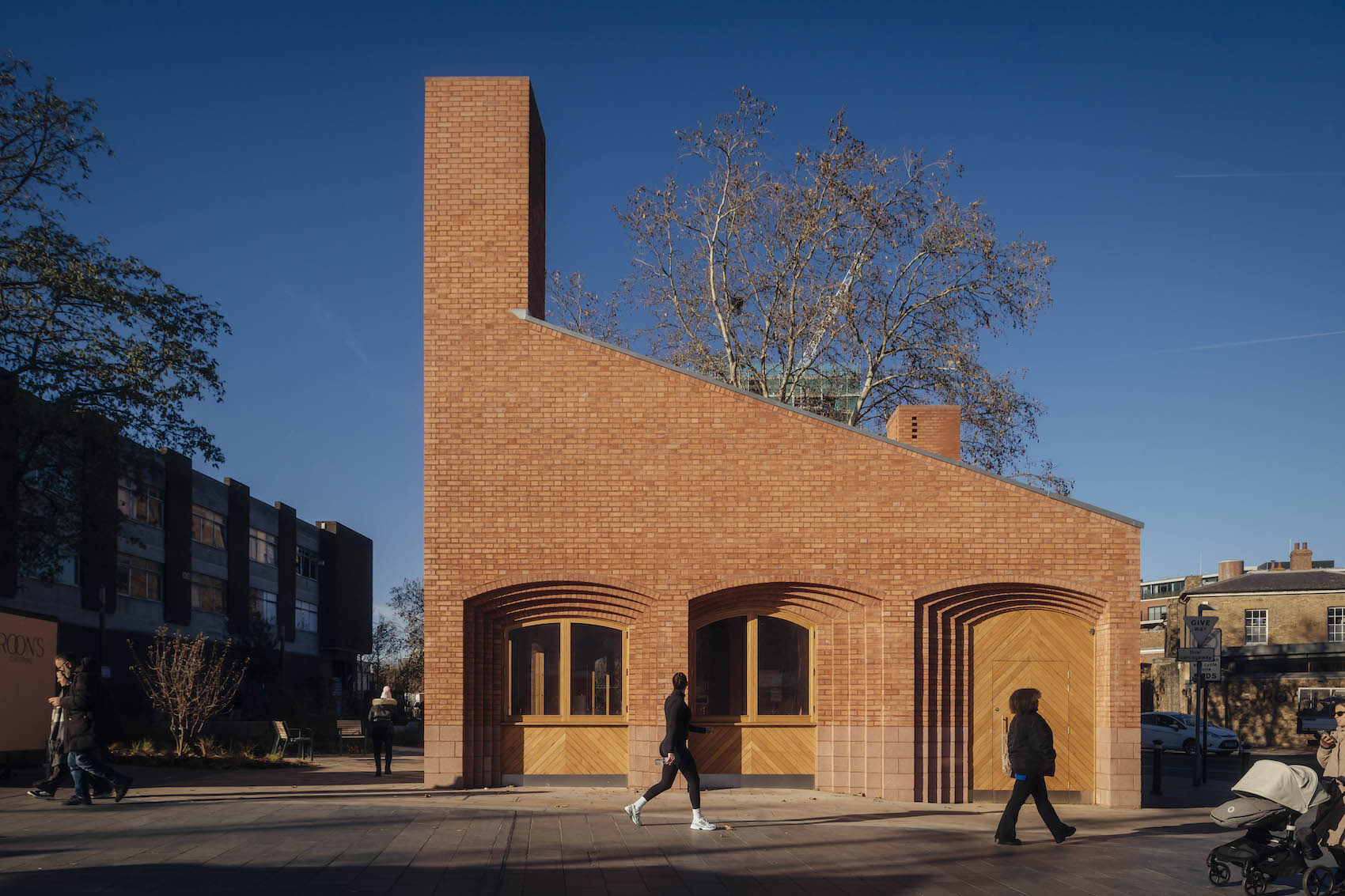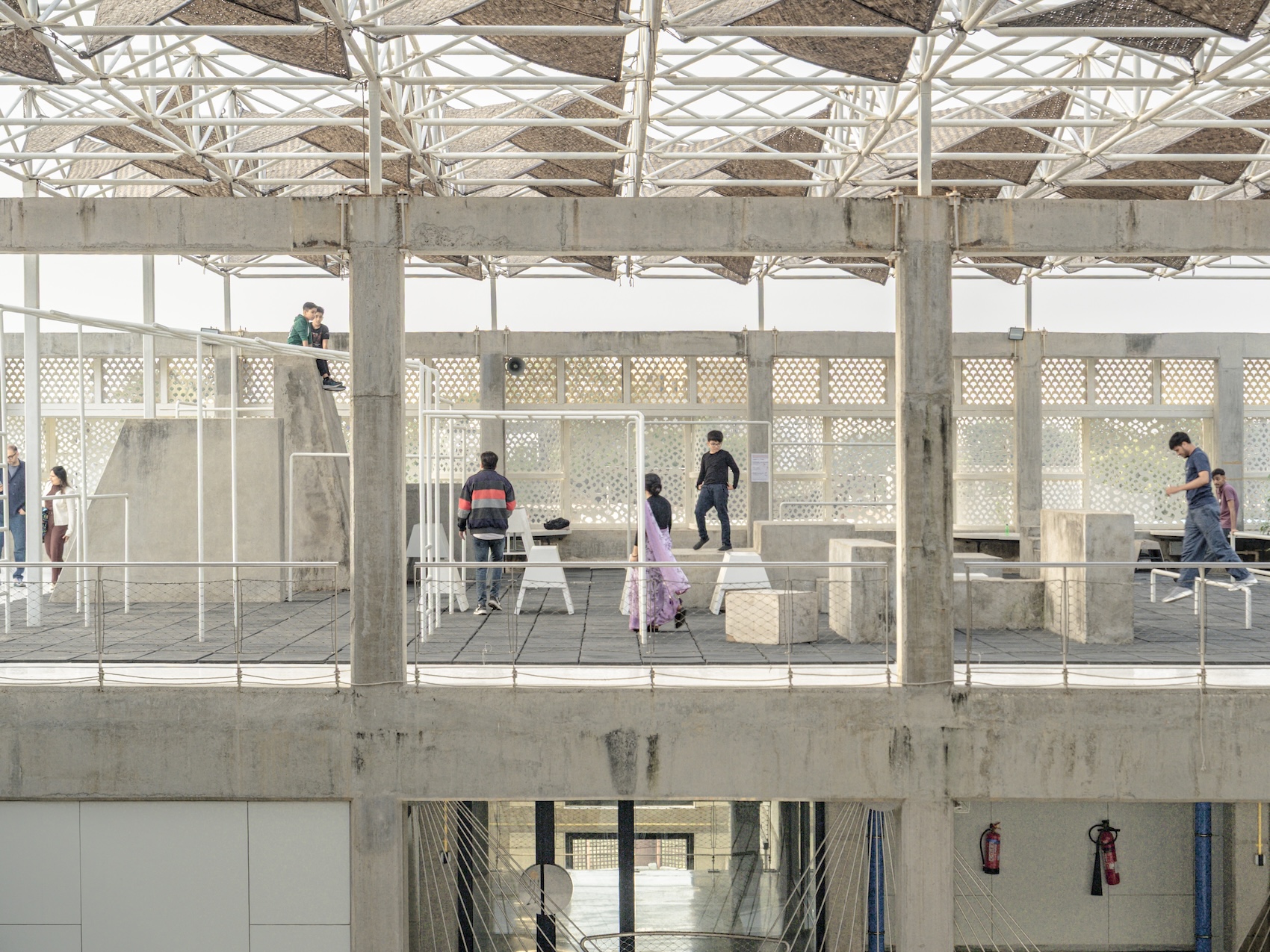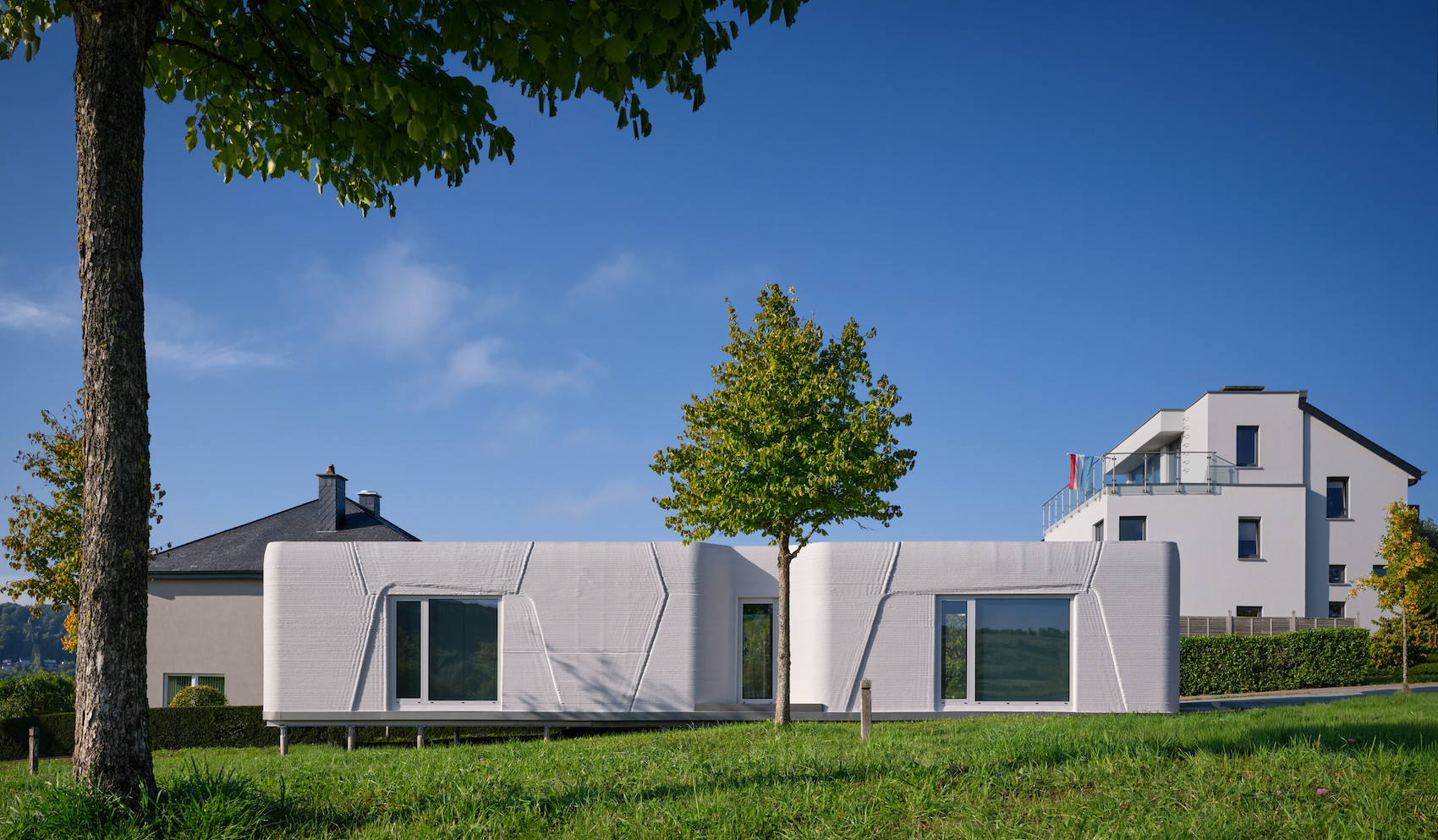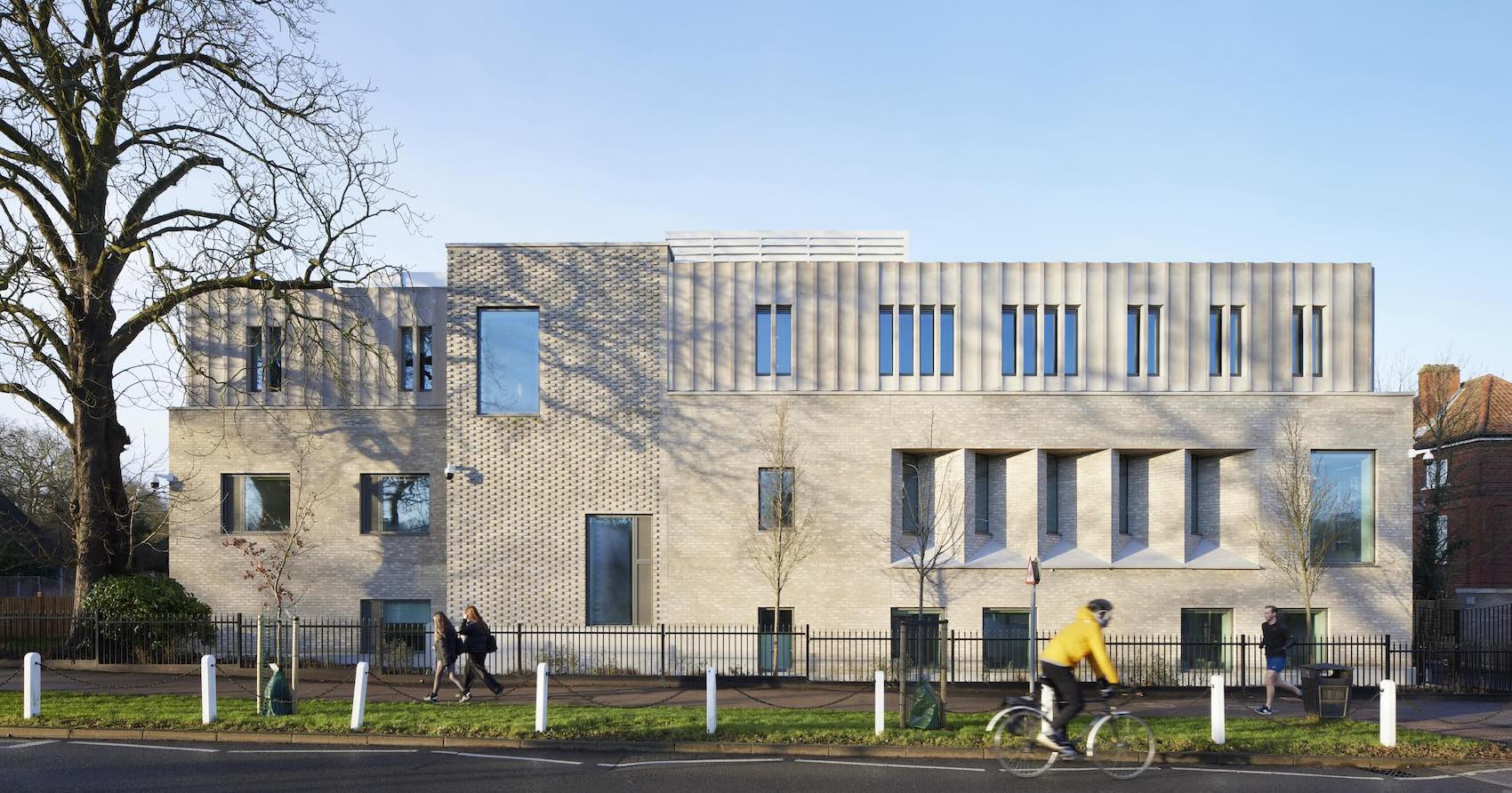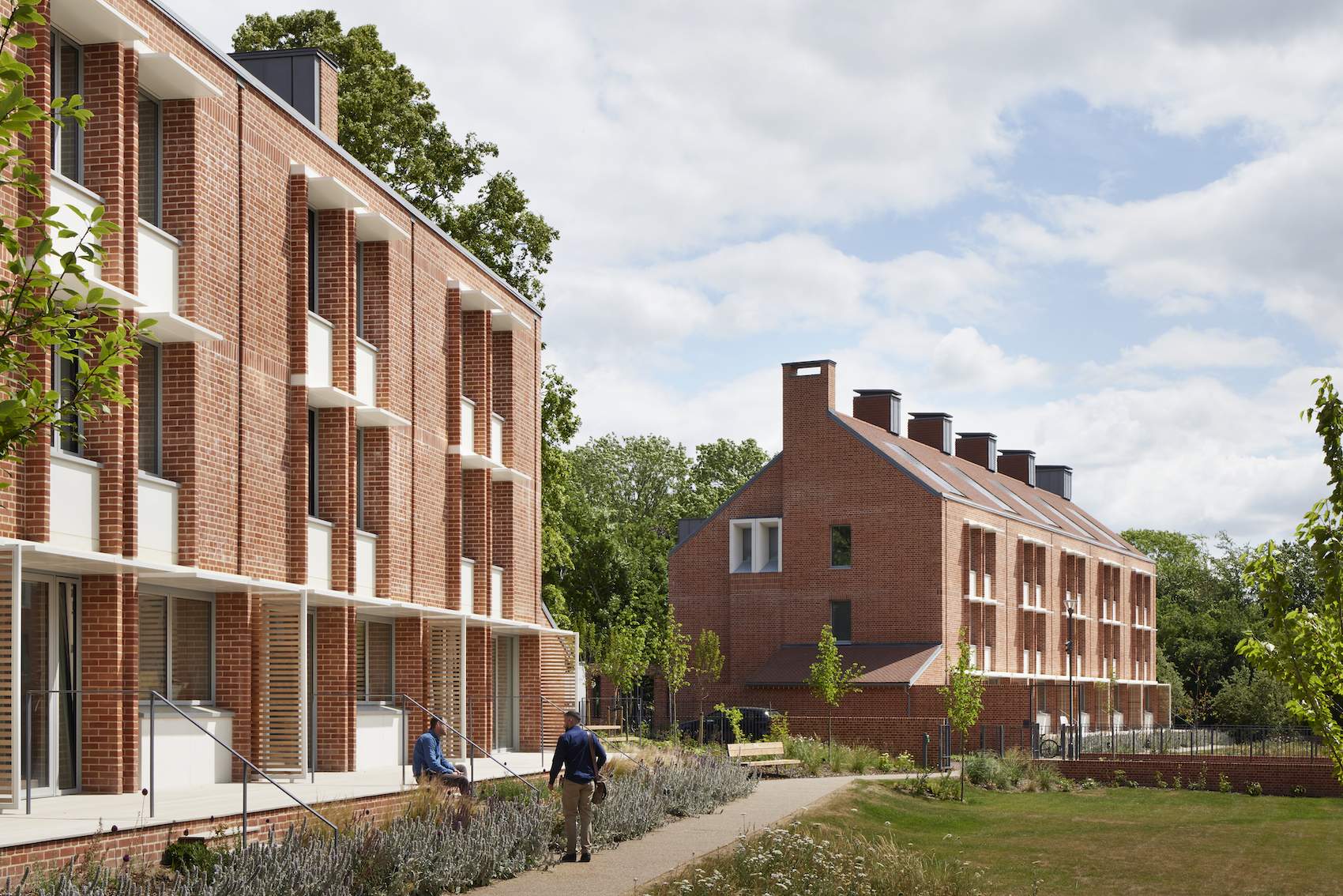Eric Parry Architects’ One Chamberlain Square, within the Paradise Birmingham development, is the latest in a series of office buildings designed by the practice over 30 years. Eric Parry and Tom Emerson discuss the project’s urban ambitions, material character and design development.
Tom Emerson In preparation for our discussion, I went down a Birmingham rabbit hole on the internet. Have you come across Cliff Richard’s video Winning? It came out of a 1973 film called Take Me High, which shows a post-war modernist British city which still shines really brightly. All the things that Birmingham later became notorious for – the Bullring, the now-demolished library – are still epic and civic.
Eric Parry The city has never been shy of rebirthing itself, from industrialisation onwards. One of the important things about the projects of the 1960s is that these were civic plans led by the council. Our building sits on the site of John Madin’s library. We had no part in the debate about its demolition, but walking through that piece of the city, there was no sense of joy. Cost-cutting badly affected the material specification of the library. It wasn’t cast concrete in the manner of Paul Rudolph or the Barbican, but was made from prefabricated panelling, and bits were beginning to fall off. One of the central concerns of our project was about how to create something with a long life within strict limitations of budget.
Tom Emerson That takes us to ceramics – faience. You’ve referred to it as reflecting the context at Chamberlain Square, but is that a bit of sleight of hand? It’s also used in your office buildings on Piccadilly and New Bond Street in London and the Holburne Museum in Bath – is it as much to do with you as with the place?
Eric Parry You’re right. Like every artist or sculptor, you get a bee in your bonnet about a material. At Piccadilly it’s about the reflection of the lights, and making a responsive north-facing facade which has longevity; you can embed colour in ceramic and it lasts the test of time. At the museum and New Bond Street it’s also about achieving a crafted finish. At Birmingham, the competition jury bought into the form of the building, with a horizontal emphasis floor-by-floor. At that stage it could well have been a glass and metal building with brise-soleil. We then began thinking about a modulation that worked with the plan form and the office grid, adding vertical emphasis. The idea of ceramic fins, a cornice and a sill that would work around the curved plan form was one that gave enough substance or muscularity to the facade. All the ceramic buildings that we’d made to this point were from a cast material, but for budgetary reasons this one had to be more like Renzo Piano’s work at, for instance, Potsdamer Platz, which uses extruded material. So we looked at how to combine extrusions at a scale that suggests greater weight. The extrusion die can be no deeper than about 200mm and you can extrude lengths of up to a metre at an industrial rate. The ceramic fins are formed from three pieces – two splayed flanks and a nose cap, which together look more or less like a single piece.
Tom Emerson I’m interested in where those shapes come from, particularly the bead on the end. I can imagine a table covered in drawings or models with every conceivable profile arrayed on it. Presumably the round bead is partly about the play of light across a surface, and softening the edge in order for it to wrap around. I also wondered how the profile relates to the curve of the plan and if it might be the only truly circular thing in the building.
Eric Parry It isn’t quite the only circle but it’s close to it. There are some honed precast lintels that are curved, as are the ground-floor windows. Otherwise, everything above the “table” is faceted. At competition I conceived two possible ways of responding to the site: either as a rectangular plan form; or by taking the bullnose that was part of the site plan and evolving it into something more organic. This is a big building – 80 by 36m – in a prominent place and an orthogonal structure would have exhibited its scale hugely. The curved plan uses the edge of the site, pulling the front forward but retracting the building elsewhere, easing views from Chamberlain Square to the north-west – a prospect that was previously blocked by the library – and along the south side towards Centenary Square. Once we had opted for a curved plan, the question was how that could be manifested in the facades, and the answer was to form the faience cornice and sills, which are naturally extruded as straight lengths that would then be cut prior to firing to suit the radius of the curve. The plan is bound by curves that are formed from six radii, ranging from 4.5m to 364m. The judgement about the faceted length of units on plan was made by using full-sized mock-ups to judge the shadow cast on the curved precast lintels at ground floor.
Tom Emerson I was also intrigued by the topography. It seems that there is a lot going on to do with building bases and ground. It’s one aspect of the project in particular where I feel we need to walk around to appreciate it, feeling the pressure in my back of the base of the town hall while looking up over a series of steps and terraces to your building.
Eric Parry As you come from New Street Station to Chamberlain Square, you move up an incline from lower ground to this upper part of the city centre, but the additional rise in the ground condition is produced by a masterplan which had to deal with complexities. There is a below-ground level of infrastructure that deals with parking, and services a number of buildings across the site, and there is also 1960s infrastructure that has been covered over. We end up with this rather monumental position. To my mind it’s a little exaggerated – it would have been better to have the building closer to the level of Chamberlain Square. The theatricality of the steps brings you up to our entrance, which establishes a new datum that runs all the way through to Centenary Square to the west. Happily, the retail unit in the prow has been taken by a restaurant. It works very well to have diners on the south-facing terrace as well as local office workers sitting with sandwiches on the steps.
Tom Emerson To me, the building calls to mind Peter Jones on Sloane Square. And it wouldn’t be the first time that I’ve encountered your buildings and instantly produced a set of associations in my mind – for example when I glimpse the Maddox Street elevation of 50 New Bond Street, I have a little flash of Pierre Chareau’s Maison de Verre. Can you say something about reference, or analogy, or collage?
Eric Parry It may be bad memory, but with any project I don’t carry precedent in the forefront of my mind, so any reference is not literal – although the heroes are definitely there. Without the trips to Italy to get immersed in the work of Giuseppe Terragni, my early project at Pembroke College Cambridge wouldn’t be the same; as with Chareau and my work at Stockley Park. At Birmingham, once one is talking about verticality, you inevitably get rhythm, which together with curve might be suggestive of Sloane Square. But while those modernist precedents are great, I would have been very concerned about a sense of “thinness” in this building because I enjoy weight, and also because of considerations such as its dialogue with the town hall. Once we’d got the rhythm of verticals, my interest was in how material they could be and how to work with a palette comprising a dark base with bronze frames set against a very varied but largely monochrome facade above.
A more colourful palette might have been welcomed but I felt that wasn’t right. The town hall is made of a very hard limestone known as Anglesey Marble. We are not trying to mimic the stone, but to achieve something sympathetic that is neither too cold nor too warm. I was also aware of our building being the backdrop to the “setting” for public artworks on Victoria Square to the south, including one of Antony Gormley’s early cast-iron figures. There are various ways of using colour with faience. You can give an element a uniform colour and use it like a pixel in a field, for example. At Birmingham, the glaze has a “particulate” appearance that is almost geological. In between the fins, the brises-soleil are like a weave and have a kind of flip-flop paint on them that changes hue with the angle of view.
Tom Emerson You mentioned Stockley Park, and that was followed by working buildings in the City, then in the West End, and now Birmingham. I see your projects in those places as having fundamentally different characters, which I suppose is to do with having different DNA, but they form an oeuvre that is really distinct in this country – about the idea that working buildings can work hard to move parts of the city forward that could otherwise ossify very quickly. What I enjoy about your work is that it deals in the place in which it is located, but obliquely– the idea of an image of the city, reflected or broken and reconstructed.
Eric Parry That course through the world of speculative development was never intended; it developed through opportunity. I see the approach as being akin to the way the Finns designed furniture – or indeed buildings – in a condition of austerity. There are functional and financial constraints and limitations but there is still very wide room for interpretation, in materials and the way buildings are constructed. And you have to actually enjoy the fact that other designers take them over. Chamberlain Square is a case in point. I was very interested to see BDP’s fit-out for PWC, which has taken our building’s raw concrete on a 9m grid and very inventively made a creative hotchpotch. The thing about limited options in workplace buildings is having to choose what you’ve got to win. You prioritise what is most important, and then weather all storms to make it manifest.


A workplace fit for the future
PricewaterhouseCoopers’ decision to take a lease on One Chamberlain Square represents a shift in emphasis away from London, in a process that has seen expanding footprints in locations such as Belfast and Edinburgh, says PWC Midlands region leader and Birmingham senior partner Matthew Hammond. In Birmingham, where the business has grown from 1,500 to 2,500 people in the last three years, “we consulted with our people about where they wanted to be and that was in the heart of the city”.
From a design perspective, he says, “we wanted spaces that were fit for the future of work”. That meant large floorplates that would allow collaboration between teams with few barriers to interaction. The brief to BDP for the fit-out asked for a “destination” in which clients and other visitors would have positive experiences. The design differs from floor to floor, and uses materials and furnishings that reference the city’s commercial history. Broad open staircases make the most of vertical adjacencies between people.
Staff are encouraged to use a variety of different work settings over the course of a day. These include light and dark meeting rooms intended to induce different subconscious responses. Rooms used for staff recruitment have some sound porosity so assessments are made in an environment resembling ordinary working conditions.
Post-Covid, says Hammond, “the hardware still works. The software – how we choose to use the space – will continue to change, as it is intended to. From the outset we had the concept of ‘hackable spaces’, in which teams can move furniture at a moment’s notice, without having to book rooms.” He anticipates that future working patterns will see a return to the office, with additional home-working. “If you have an environment that is better for work than being at home but you can work from home when you need to, that’s the best outcome.”
Credits
Client
Argent + Hermes
Architect
Eric Parry Architects
Structural engineer, M&E engineer
Arup
Quantity surveyor
Quantity surveyor Faithful + Gould
Façade engineer
FMDC (RIBA Stage 2-3) Wintech Engineering (RIBA Stage 4-6)
Landscape architect
Grant Associates
Main contractor
Carillion (until January 2018) BAM (completed December 2019)
Façade subcontractor
Inasus
Terracotta supplier
NBK
Precast concrete supplier
Decomo















